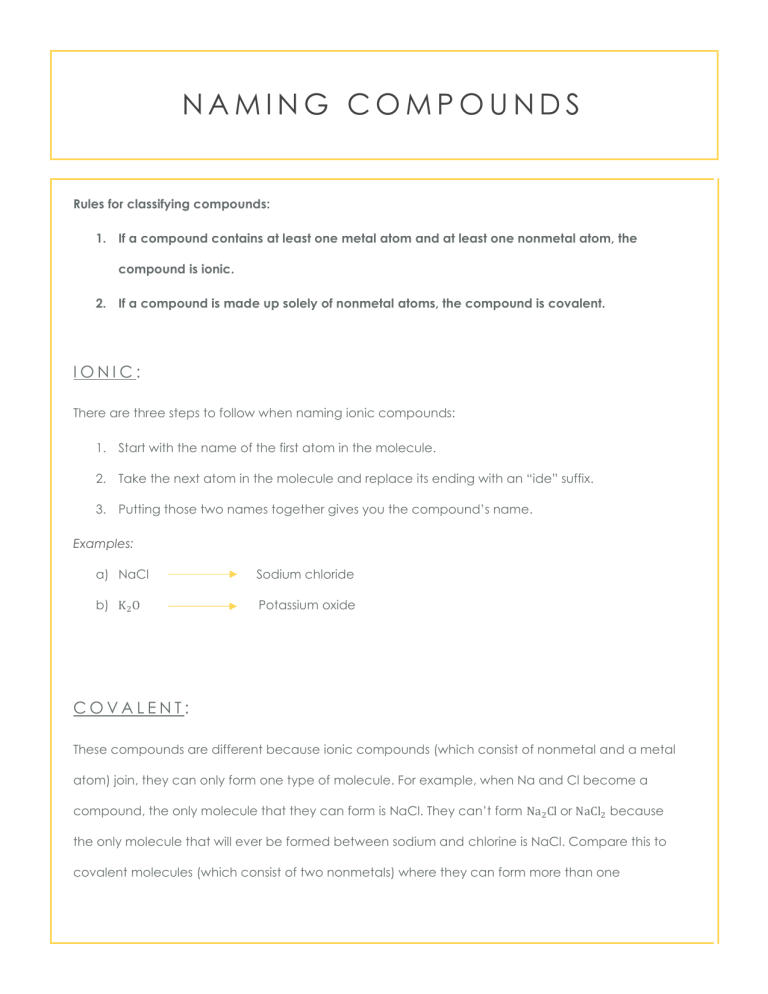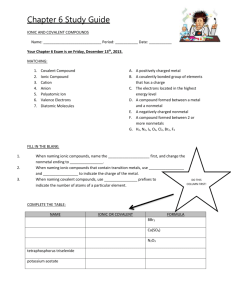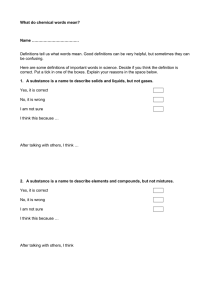Naming Compounds
advertisement

NAMING COMPOUNDS Rules for classifying compounds: 1. If a compound contains at least one metal atom and at least one nonmetal atom, the compound is ionic. 2. If a compound is made up solely of nonmetal atoms, the compound is covalent. IONIC: There are three steps to follow when naming ionic compounds: 1. Start with the name of the first atom in the molecule. 2. Take the next atom in the molecule and replace its ending with an “ide” suffix. 3. Putting those two names together gives you the compound’s name. Examples: a) NaCl Sodium chloride b) K 2 O Potassium oxide COVALENT: These compounds are different because ionic compounds (which consist of nonmetal and a metal atom) join, they can only form one type of molecule. For example, when Na and Cl become a compound, the only molecule that they can form is NaCl. They can’t form Na 2Cl or NaCl2 because the only molecule that will ever be formed between sodium and chlorine is NaCl. Compare this to covalent molecules (which consist of two nonmetals) where they can form more than one molecule between two elements. For example, when carbon and oxygen join together, they can form CO or CO2 . We add prefixes to differentiate them from one another. So, the first would be carbon monoxide and the second would be carbon dioxide. Below is a table depicting the prefixes: Prefix Meaning mono one di two tri three tetra four penta five hexa six hepta seven octa eight nona nine deca ten Examples: a) SF6 Silicon hexafluoride b) K 3 N Tripotassium nitrate 2 3



